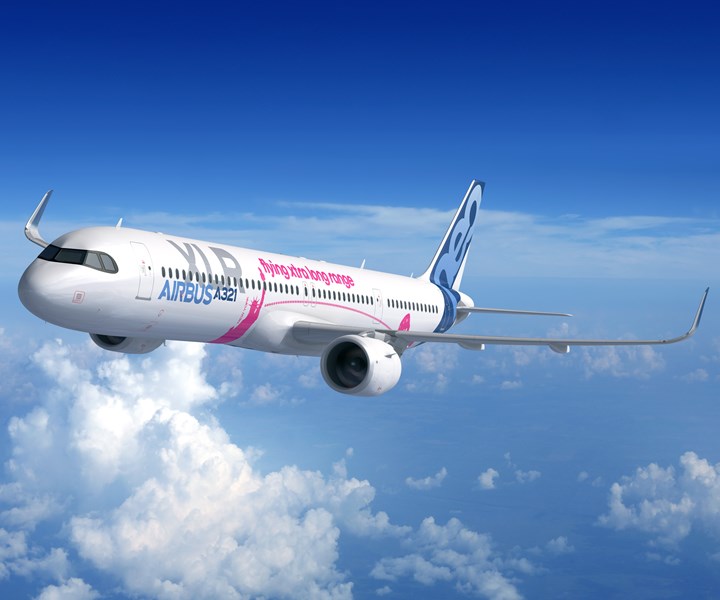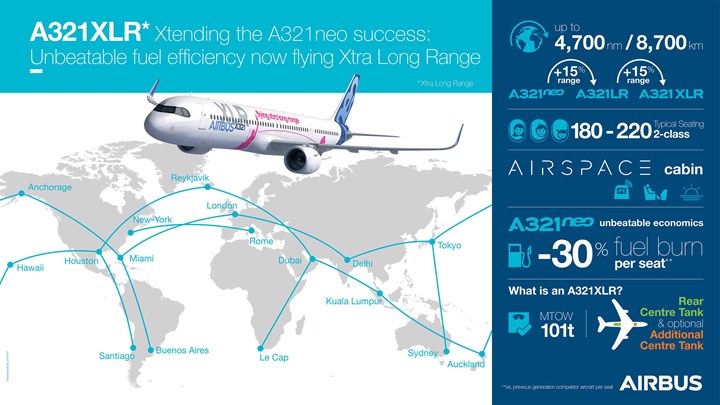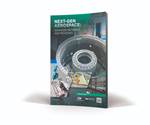Airbus launches A321XLR long-range single-aisle airliner
The latest evolution of the A321neo is said to have a range of 4,700 nm while providing 30% lower fuel burn than previous aircraft.

Source | Airbus
At the 2019 Paris Air Show, Airbus announced its new A321XLR long-range single-aisle aircraft, said to burn 30% less fuel per seat than competitor aircraft. Targeted at a 2023 launch, the aircraft will reportedly deliver a range of up to 4,700 nautical miles, which is 15% more range than the A321LR, with the same fuel efficiency.
With this added range, Airbus says that airlines will be able to operate a lower-cost single-aisle aircraft on longer and less heavily traveled routes that are currently served by larger and less efficient widebody aircraft. This will reportedly enable operators to open new routes, such as India to Europe or China to Australia, as well as further extending non-stop reach on direct transatlantic flights between continental Europe and the Americas.

Source | Airbus
For passengers, Airbus offers a high-quality new “Airspace” cabin, as well as seats in all classes modeling the high comfort as those found on long-haul widebody aircraft.
The A321XLR has been designed to maximize overall commonality with the A321LR and the rest of the A320neo family, while introducing changes needed to give the aircraft an extra long range with increased revenue payload. Changes include:
- a new permanent Rear Centre Tank (RCT) for more fuel volume;
- a modified landing gear for an increased maximum take-off weight (MTOW) of 101 metric tonnes; and
- an optimized wing trailing-edge flap configuration to preserve the same take-off performance and engine thrust requirements as today’s A321neo.
Specifically, the new optimized RCT is said to hold more fuel than several optional Additional Centre Tanks (ACTs) did previously, while taking up less space in the cargo hold, opening up underfloor volume for additional cargo and baggage on long-range routes.
Related Content
-
“Structured air” TPS safeguards composite structures
Powered by an 85% air/15% pure polyimide aerogel, Blueshift’s novel material system protects structures during transient thermal events from -200°C to beyond 2400°C for rockets, battery boxes and more.
-
Combining multifunctional thermoplastic composites, additive manufacturing for next-gen airframe structures
The DOMMINIO project combines AFP with 3D printed gyroid cores, embedded SHM sensors and smart materials for induction-driven disassembly of parts at end of life.
-
Development of a composite liquid hydrogen tank for commercial aircraft
Netherlands consortium advances cryogenic composites testing, tank designs and manufacturing including AFP, hybrid winding, welding of tank components and integrated SHM and H2 sensors for demonstrators in 2025.
.jpg;width=70;height=70;mode=crop)





